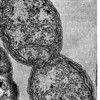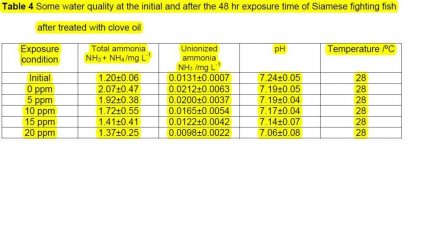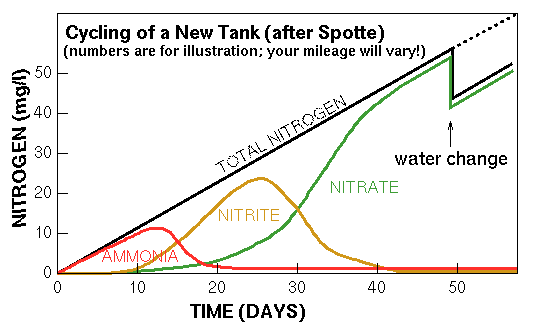TwoTankAmin
Fish Connoisseur
I know I am a lone voice on this, but I still see little reason to abandon my stance on what levels of ammonia or nitrite are harmful to fish. This is usually only an issue during a fish in cycling for most of us as we may not see an ammonia reading in a tank ever once the tank is established. For the purposes of this discussion I would like to limit the topic to ammonia only.
My argument had always been and still is with the concept that during fish in cycling, any reading of ammonia is intolerable and water changes must be done. I have said this many times before and will say it again. that statement about ammonia is simply not factually correct. I would like to offer more on this as food for thought.
The most important fact to understand is that different fish have different levels of ammonia they can handle. There is no universal number for this.
 /www.google.com/url?sa=t&rct=j&q=&esrc=s&source=web&cd=19&cad=rja&ved=0CF0QFjAIOAo&url=http%3A%2F%2Fwww.nature.org%2Fcs%2Fgroups%2Fwebcontent%2F%40web%2F%40alaska%2Fdocuments%2Fdocument%2Fprd_026308.pdf&ei=1Y7MUd64ENj64AOa-oDACQ&usg=AFQjCNExALy9-xsoUKsVESpMs0bRDU-WRQ&bvm=bv.48572450,d.dmg
/www.google.com/url?sa=t&rct=j&q=&esrc=s&source=web&cd=19&cad=rja&ved=0CF0QFjAIOAo&url=http%3A%2F%2Fwww.nature.org%2Fcs%2Fgroups%2Fwebcontent%2F%40web%2F%40alaska%2Fdocuments%2Fdocument%2Fprd_026308.pdf&ei=1Y7MUd64ENj64AOa-oDACQ&usg=AFQjCNExALy9-xsoUKsVESpMs0bRDU-WRQ&bvm=bv.48572450,d.dmg
What I keep seeing is that not allowing some accumulation of ammonia and nitrite as it shows on the API kits is not the wrong thing to do in most instances. This information combined with the selection of cycling fish that are more resistant to the effects of ammonia sure seems to indicate to me I am on the right track here.
A few more interesting factoids I have also picked up:
The odds are good that exposing fish to ammonia that may be harmful and then removing that ammonia so the fish can recover but then having this followed by another jolt of ammonia causes that second jolt to be even more damaging.
We know that it is NH3 which is the toxic form of ammonia because it can pass though the gills into the fish's bloodstream but NH4+, the way less toxic form cannot. What I learned was that, once inside a fish, NH3 gets converted to NH4+ and it is this form that actually causes the damage inside the fish.
There is also evidence that fish which have been recently fed have a greater resistance to the effects of ammonia than fish which have been starved. This of course would fly in the face of the advice when ammonia shows up in a tank to feed sparingly. I am going to have to look into this further.
My argument had always been and still is with the concept that during fish in cycling, any reading of ammonia is intolerable and water changes must be done. I have said this many times before and will say it again. that statement about ammonia is simply not factually correct. I would like to offer more on this as food for thought.
The most important fact to understand is that different fish have different levels of ammonia they can handle. There is no universal number for this.
from http
Length of Exposure
The concentrations of ammonia that cause toxicity to fish depend on the length of exposure.
Lower concentrations may not kill or adversely affect fish over short periods of time, but the
same concentrations could kill or impair aquatic life under longer time frames. US EPA
recommends an acute ammonia criterion of 2.9 or 5.0 mg N/L (for short-term exposure) and a
chronic criterion of 0.26 or 1.8 mg N/L (for long-term exposure). Water with concentrations of
less than 0.020 mg/L unionized ammonia is considered safe for fish reproduction (EPA 1989).
As shown in Figure 3, lower and lower concentrations of ammonia are tolerated with increasing
pH values under acute (short-term) exposure scenarios. The same is true under longer term
exposures (Figure 4), and lower concentrations are tolerated under higher temperatures.
A single or simple concentration measurement of ammonia is not sufficient to evaluate and/or
regulate ammonia contamination. The influence on the toxicity of ammonia to fish is impacted
by both duration and frequency of exposure. Duration of exposure to ammonia has been
demonstrated to be a critical factor affecting fish survival - and should therefore be incorporated
into chronic and acute standards.
 /www.google.com/url?sa=t&rct=j&q=&esrc=s&source=web&cd=19&cad=rja&ved=0CF0QFjAIOAo&url=http%3A%2F%2Fwww.nature.org%2Fcs%2Fgroups%2Fwebcontent%2F%40web%2F%40alaska%2Fdocuments%2Fdocument%2Fprd_026308.pdf&ei=1Y7MUd64ENj64AOa-oDACQ&usg=AFQjCNExALy9-xsoUKsVESpMs0bRDU-WRQ&bvm=bv.48572450,d.dmg
/www.google.com/url?sa=t&rct=j&q=&esrc=s&source=web&cd=19&cad=rja&ved=0CF0QFjAIOAo&url=http%3A%2F%2Fwww.nature.org%2Fcs%2Fgroups%2Fwebcontent%2F%40web%2F%40alaska%2Fdocuments%2Fdocument%2Fprd_026308.pdf&ei=1Y7MUd64ENj64AOa-oDACQ&usg=AFQjCNExALy9-xsoUKsVESpMs0bRDU-WRQ&bvm=bv.48572450,d.dmgWhat I keep seeing is that not allowing some accumulation of ammonia and nitrite as it shows on the API kits is not the wrong thing to do in most instances. This information combined with the selection of cycling fish that are more resistant to the effects of ammonia sure seems to indicate to me I am on the right track here.
A few more interesting factoids I have also picked up:
The odds are good that exposing fish to ammonia that may be harmful and then removing that ammonia so the fish can recover but then having this followed by another jolt of ammonia causes that second jolt to be even more damaging.
We know that it is NH3 which is the toxic form of ammonia because it can pass though the gills into the fish's bloodstream but NH4+, the way less toxic form cannot. What I learned was that, once inside a fish, NH3 gets converted to NH4+ and it is this form that actually causes the damage inside the fish.
There is also evidence that fish which have been recently fed have a greater resistance to the effects of ammonia than fish which have been starved. This of course would fly in the face of the advice when ammonia shows up in a tank to feed sparingly. I am going to have to look into this further.




